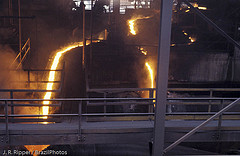What You Don't Need to Succeed
 In this post you are going to discover the secret of becoming a successful contractor via the most direct path.
In this post you are going to discover the secret of becoming a successful contractor via the most direct path.
Yet before I get into that, let me talk briefly about the main currency of contracting in the UK. There are three forces at work. In order of importance they are: skills, experience and qualifications. These the three basic things that you need to align with a client's expectations in order to get a contract.
Let's take these in reverse order starting with qualifications.
Qualifications in IT are a joke. Having a degree can give you a competitive edge but it is by no means essential. It doesn't even seem to matter what subject your degree is in. I've worked with people with degrees in Metallurgy, Marine Biology and Music before. Then we have the so called professional qualifications. These are ridiculously trivial when compared to other professions.
You can pick up an in MCSE less than a month and a Sun Certified Enterprise Architect course can be done in 14 days. A Cisco Certified Network Professional certification will take you 2 weeks.
By comparison nurses have to train for 3 years and fire fighters train for 2 years before they pass their probationary period. Basic training to become a soldier takes around 6 months.
Therefore it is not surprising that IT qualifications are not taken very seriously by employers. If you have them, then it doesn't hurt, but they are pricey to obtain and they go out of date fast.
Never in all of my years working in IT have my qualifications been checked. If I had been less honest, I could have given myself a few more degrees and half a dozen made up certifications.
So what about experience?
Everything changes so fast in IT that anything more than 5 years experience tends to be mostly irrelevant, even in the same skill set. You might have been working with the same technology for 15 years, but the chances are you were using it totally differently five years ago.
Even touchy–feely management skills come in and out of fashion as quick as David Beckham's underpants. It's not really how much experience you have that counts, but having relevant experience.
Again, just like qualifications, your experience is never verified. People just don't have the time. If you sound convincing enough, then you would likely be taken a face value.
Lastly we come to your technical skills. Most skills being sought by clients can either be learned in hours or at most a few days. That's assuming of course that you have some basic levels of IT competence.
For more complex subjects, training courses can often teach you the subject in a week or two. If the skill is new to you, you can cram a lot on it before a contract and carry on with a reasonable degree of credibly. It is even possible to pass a technical test this way. You may even beat someone who actually has more knowledge and experience, if they have not brushed up before the test.
That of course is assuming you even have a technical test. These are rarer than you would expect, presumably due to the lack of time people have to set them up, let alone assess them. I have certainly come across contracts that you could completely blag. As long as you were able to hit the ground running, no one would even know. Even if you can't there's a chance that it would take months before they figure it out.
So in conclusion, none of the three sacred CV areas are actually much of a hurdle. The point is, the actual skills that you need to really make it in this game are never listed on your CV. It is surprising how few people realise this and they spend their entire career beefing up those three areas.
Instead the real power skills involve understanding the market, salesmanship and having a good strategy. If you want to survive in the world of contracting you need to understand how to work with people and deal with office politics. No one has yet created a diploma for those skills. You will need to look for other resources, such as the ones available on my site to help you there.





Calculation of Phase Diagrams
 This excellent book is probably the first comprehensive guide to the CALPHAD method. CALPHAD is an acronym that was coined in the early 1970s and stands for CALculation of PHAse Diagrams.
This excellent book is probably the first comprehensive guide to the CALPHAD method. CALPHAD is an acronym that was coined in the early 1970s and stands for CALculation of PHAse Diagrams.
The CALPHAD method is based on the fact that a phase diagram is a representation of the thermodynamic properties of a system. Thus, if the thermodynamic properties are known, it is possible to calculate the multi–component phase diagrams. In other words, thermodynamic descriptions of lower–order systems (e.g., the Gibbs energy of each phase) can be combined to extrapolate higher–order systems.
In metallurgical engineering, for example, the CALPHAD method is invaluable when it comes to understanding the relationship between the chemical composition of an alloy (typically based on complex higher–order systems), the processing conditions, the resulting microstructure, and the alloy's final properties. In addition, most alloys undergo one or more phase transformations during use. Such phase transformations can often be understood through the use of phase diagrams (and which now can be calculated, thanks to the CALPHAD method).
The book covers the history of the CALPHAD method; the laws and basic concepts of thermodynamics (enthalpy, heat capacity, chemical equilibrium, Gibbs energy, etc); various experimental techniques to measure thermodynamic quantities and to construct phase diagrams; thermodynamic models for solutions and compound phases (stoichiometric compounds, random substitutional models, sublattice models, ionic liquid models, and aqueous solutions); phase stabilities; short–range and long–range ordering models; the role of magnetic Gibbs energy; computational methods and thermodynamic optimization of phase diagrams; as well as the coupling of thermodynamics and kinetics.
Finally, a number of important practical examples where the CALPHAD method was successfully applied are given and described in detail. The examples include titanium–based Ti–6Al–4V alloy, aluminum casting alloys, corrosion–resistant duplex stainless steels, nickel–based superalloys, high–speed steels, sigma–phase formation, micro–alloyed steels, NiAl–based and TiAl–based intermetallic alloys, magnetic alloys, high–strength cobalt–nickel steels, slag and slag–metal equilibria, chemical vapor deposition processing, hot salt corrosion in gas turbines, and the effect of radiation on the precipitation of silicides in nickel–based alloys.





Latest Trends and Procedures Of Cosmetic Surgery
 Until the 1980s, most cosmetic surgeries were approached as multi–staged procedures done over a period of years. Middle–aged patients might have their eyelids done but would then be advised to defer a facelift until reaching their 60s. None of the «rejuvenation procedures» that are popular today even existed, and complications were so feared that patients would often have surgery on only one side of the face at a time, with several weeks between procedures.
Until the 1980s, most cosmetic surgeries were approached as multi–staged procedures done over a period of years. Middle–aged patients might have their eyelids done but would then be advised to defer a facelift until reaching their 60s. None of the «rejuvenation procedures» that are popular today even existed, and complications were so feared that patients would often have surgery on only one side of the face at a time, with several weeks between procedures.
Past and Present Trends In Cosmetic Surgery
In recent years, there have been several major trends in cosmetic surgery. First, people are now having procedures done earlier, with whole–face rejuvenation done in multiple treatments. The second, even more dramatic trend is the use of high technology in cosmetic laser surgery, which is now performed in a surgeon's own office or an outpatient surgery facility.
There are social and economic trends at work, not just medical ones. The pressures of commercial life, of working to older ages and of women in their 40s succeeding the professional world all contribute to the popularity of cosmetic surgery. And it is well established that personal image and looks play a powerful role in the careers of professional people. Doctors now understand that among the various motivations for having cosmetic surgery earlier in life is some people's need to secure their social and professional status.
Cosmetic Surgery Innovation
Clearly, it is not just the new technologies and procedures that are available that have changed the nature of cosmetic surgery. Greater knowledge about the human body and its construction (and its flexibility) has led to there being many, many proponents for the multiple procedure approach. Then, too, there is the matter of balance. Following facial rejuvenation, a patient's face may look younger but other aspects of their physique and appearance may not match up.
On the other hand, a "whole–body" approach considers the entire person in the equation, which is why another new trend is cosmetic surgeons relying on help from psychologists, make–up artists and image consultants in developing patient plans. In other words, cosmetic surgery is trending toward being a «package deal» for the whole person.
As far as new procedures, there has been a great deal of change and progress in the use of «injectables,» and not just the famous Botox injections for wrinkle elimination. Various kinds of injectables have been developed to sculpt the human body in various ways and in various places. Used as part of an overall rejuvenation or reconstruction plan, along with other ever–advancing procedures like dermabrasion and cosmetic laser surgery, injectables have become an important part of the plastic surgeon's toolkit.
Other technologies and procedures are continually evolving. Newer, more powerful and more accurate lasers are being developed and manufactured all the time, and advances in many medical fields––metallurgy, anesthesia, antibiotics, etc.––are rapidly adopted where needed by cosmetic surgeons.
Cosmetic Laser Surgery: Right For You?
Another major trend is that doctors are now performing cosmetic laser surgery and other procedures outside of the hospital atmosphere. Some plastic surgeons have their own outpatient surgery facilities, while others band together to form partnerships for this purpose. Procedures have become safer with advances in medical technology and doctors have learned to reduce complications to a fraction of a percent of all procedures.
This trend toward outpatient procedures has some very powerful unseen advantages. Leaving the hospital out of the equation has numerous benefits, beginning with an economic one.
It is far less expensive for the patient, who may have to consider cosmetic surgery financing options if unable to pay up front, if there is no hospital stay. In addition, the presence of antibiotic–resistant infections in hospitals is a good reason to avoid them if at all possible.
One other recent trend has been the good press that cosmetic surgery has been getting, compared to the negative portrayals of yesteryear and the casting of patients as "victims.” In fact, some doctors point to the television series "Extreme Makeover” as a reflection of a new appreciation for cosmetic surgery. The fact that the program also shows "everyday people” having these procedures, not just the Ivana Trumps of the world, is an indication of how cosmetic laser surgery and other life–enhancing procedures are considered not only acceptable, but affordable, as well.




